TORS OF DARTMOOR EXTRA
a collection of extra material from the tors of dartmoor team
Dartmoor Discovered: Tavy Cleave TorsTim Jenkinson on 6 December 2023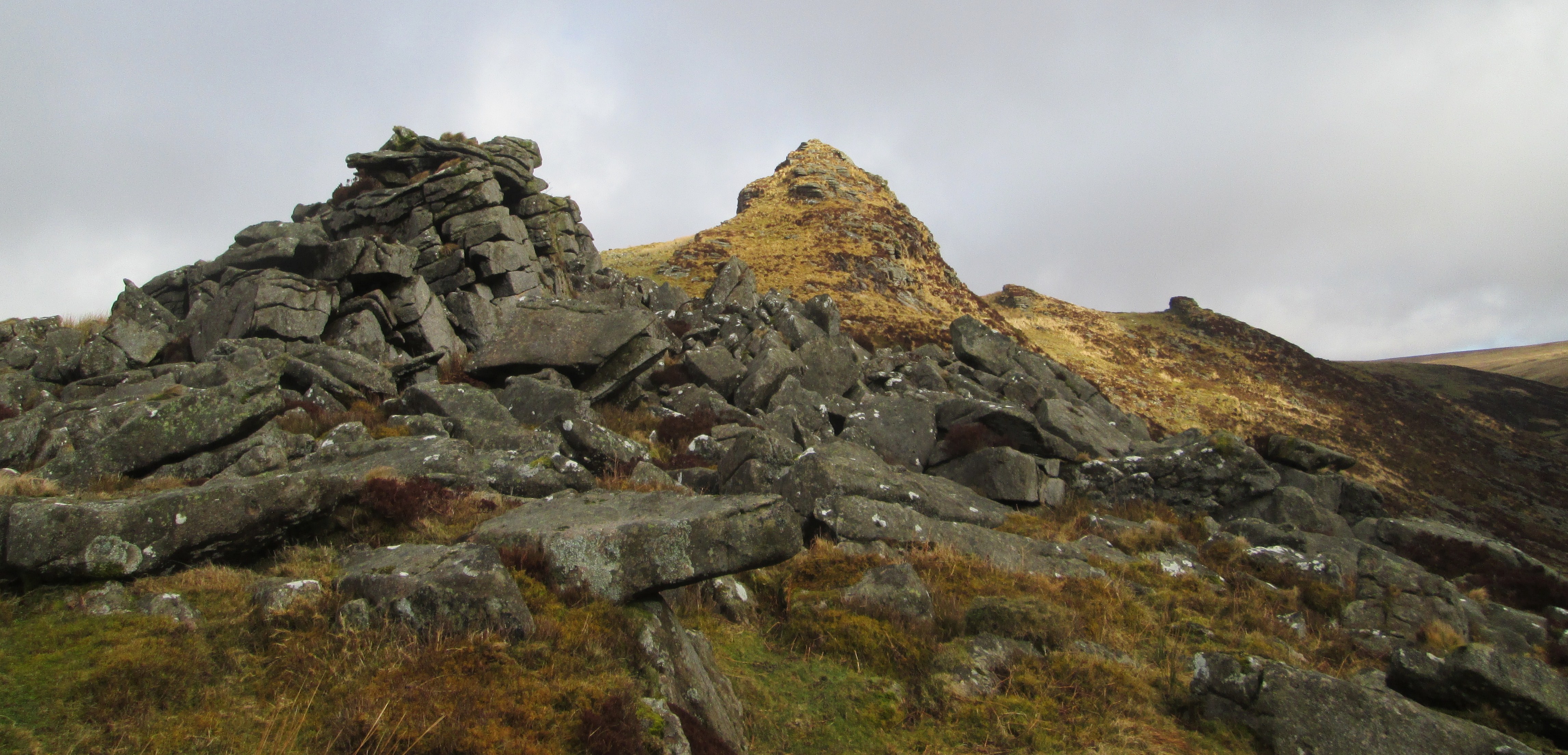 Tavy Cleave. Four of the five tors, Sharp Tor centre An edited version of this article appeared in Dartmoor Magazine - Summer 2019, Issue 135.For me there is simply no better sight on Dartmoor than the dramatic rock-strewn slopes of Tavy Cleave (SX 5583). Described by William Crossing (1905) as a wild grandeur that is 'unsurpassed throughout the Moorland region', whether you are standing down at the river's edge or on high the thrilling vista is simply breath taking. Best reached by walking in a north easterly direction from the car park at Lane End at SX 537821, Tavy Cleave is a must see experience for the moorland visitor. After cresting the hill near Ger Tor a huge rocky ridge pans into view to the north that never fails to lift the spirit. The scenery here is exhilarating and several tors dominate the rocky scarp that is strewn with a wilderness of broken granite on both sides of the river far below. Richard Horsham (2016) explains what it is that is particularly special about the Cleave 'It is a narrow 2.18 km long, 50-120-metre-deep snaking gash in the broad gently sloping moorland and with no woodland obscuring its physical appearance its tors and steep clitter strewn slopes are easily visible' adding that the Cleave has 'some of the most precipitous slopes of all Dartmoor's gorges'. 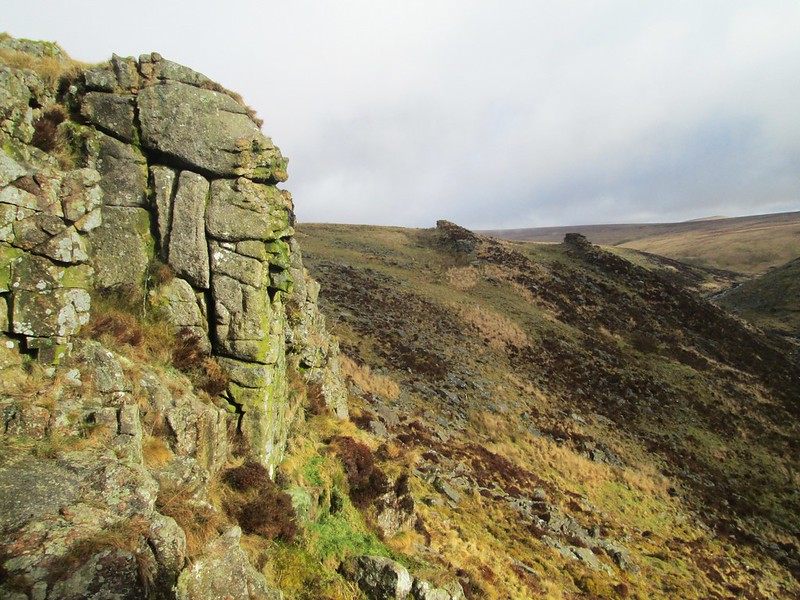 Tavy Cleave Sharp Tor to NE tors However, despite its obvious appeal and now more regular references in the literature of the moor the area is still surprisingly underrepresented by the Ordnance Survey. We learn from Crossing that there are indeed five distinct rock piles on the western side of the river and together they form an impressive group that is collectively known as the Tavy Cleave Tors, none of which are shown nor named on modern maps. I have written about this oversight before in 2010, but a recent visit to the area in February 2018 with walking companion Paul Buck as we stood amid the towering tors confirmed just how alarming the omission is. 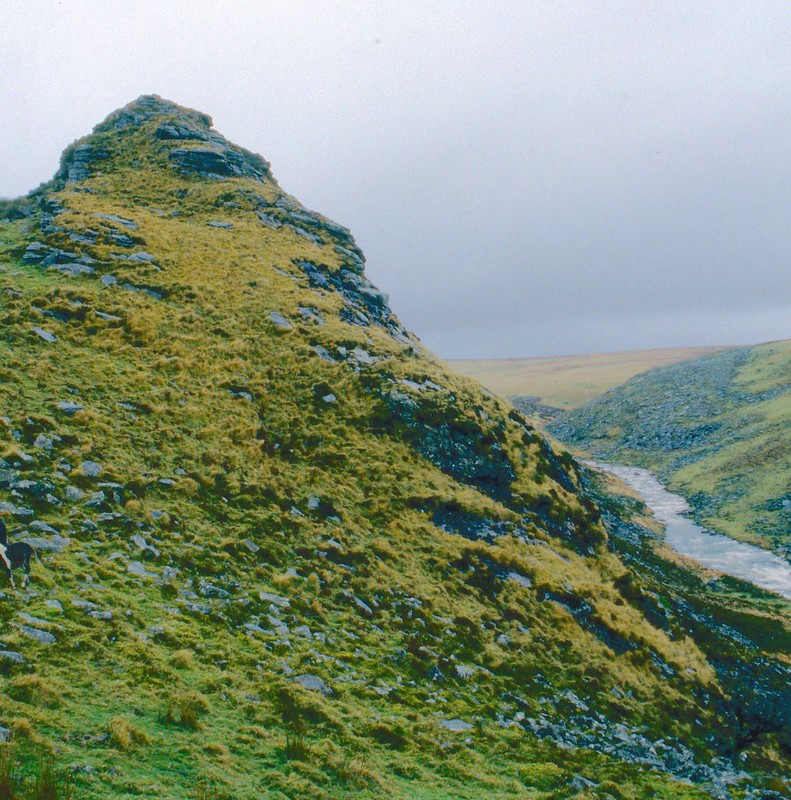 Tavy Cleave Sharp Tor Crossing explains that only one of the tors here bears a name 'this the principal mass the Moormen often call Sharp Tor'. Indeed the huge upstanding pile of that name immediately commands attention at SX 5540 8335. It has tremendous views of the river below. Its rugged rocky summit almost induces vertigo as the hillside falls sharply away to the east. In 1996 I was contacted by Dr Peter Sanders who at that time with his colleague Alan Watson was attempting to visit as many of the tors of Dartmoor as possible, and in that sense, the duo come from an early generation of what we now know as 'tor baggers'. Peter later furnished me with a list of all the tor sites they had visited which included an assessment of the five tors in Tavy Cleave. The February 2018 excursion enabled a review of those earlier impressions and provided a good opportunity to photograph and describe each tor separately, something which to our knowledge had not been recorded elsewhere in the literature of the moor. Using Sharp Tor as the central pile we explored the other four tors emanating from that site and named them accordingly in relation to their position to the main tor. We started with the huge fissured outcrop at SX 5539 8340 that lies approximately 100 metres or so above and to the north of Sharp Tor, that we have dubbed Tavy Cleave North Tor. This tor perfectly illustrates what Horsham (2016) describes as 'horizontal jointing' an effect said to be produced as the granite expands when the pressure from overlying rock is relaxed. 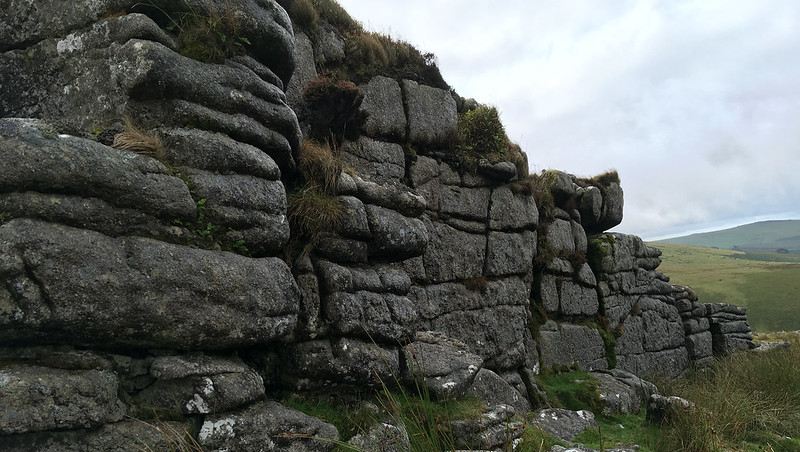 Tavy Cleave North Tor Further away to the north east of Sharp Tor are two more piles in descending order at SX 5548 8348 a jagged higher tor, that is topped by vegetation with stunning views back along the river, this is Tavy Cleave North East Tor (higher). Below here a little more than 100 metres away at SX 5554 8351 is the lower pile, similar in arrangement to its neighbour that we have identified as Tavy Cleave North East Tor (lower). We noted that both these smaller tors, have a similar appearance from afar to that of the Higher and Lower Dunnagoat Tors that are seen elsewhere at SX 5573 8650 and SX 5575 8632 respectively. 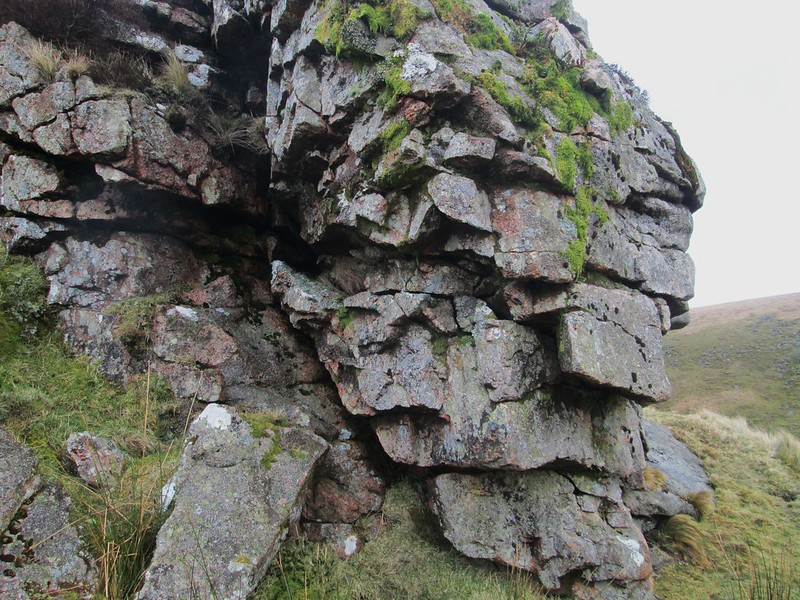 Tavy Cleave North East Tor (Higher) SX 5548 8348 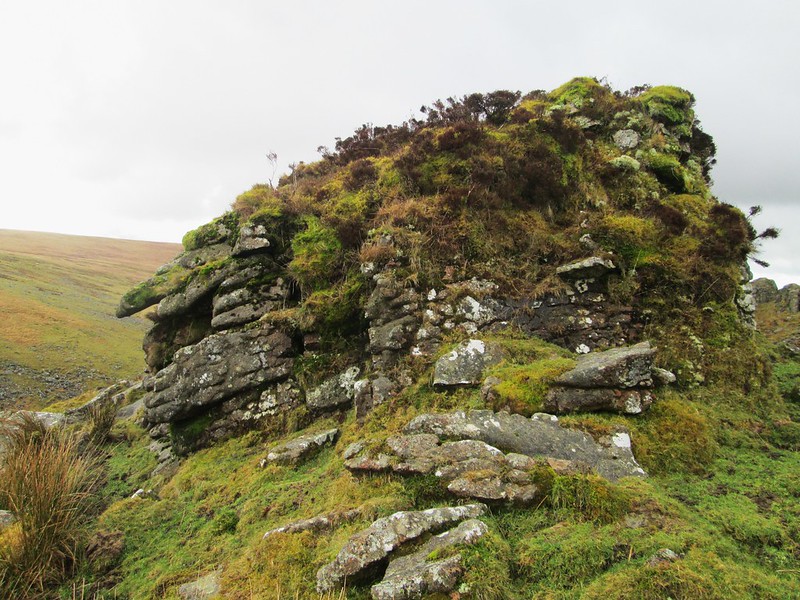 Tavy Cleave North East Tor (Lower) SX 5554 8351 The fourth and final tor in the Tavy Cleave set can be found below and approximately 150 metres to the south and slightly west of Sharp Tor at SX 5534 8323. This is perhaps the least impressive of the rock piles here presenting as a rather scruffy group of two ruined outcrops that are spread across the hillside but still giving the visitor excellent views across the river. As a result of its position in relation to the main pile we have dubbed it Tavy Cleave South Tor. 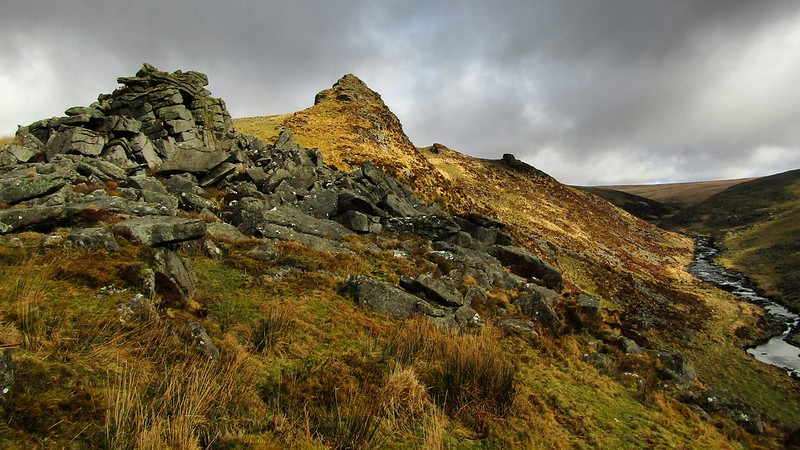 Tavy Cleave South Tor, Sharp Tor, North-East Tors (higher and lower) Another notable spread of granite can be seen on the opposite side of the river where what appears to be a totally disintegrated tor of immense proportions is scattered. Some small outcrops survive here but there is nothing substantial. This area is referred to by Crossing (1912 p174) as a hill known as the Knoll or to give it another name 'Outer Standon'. He comments on a large mound there that was thrown up by the tinners in the early 19th Century a feature that is said to have been given the name of the Lord Mayor's Castle by the moormen. 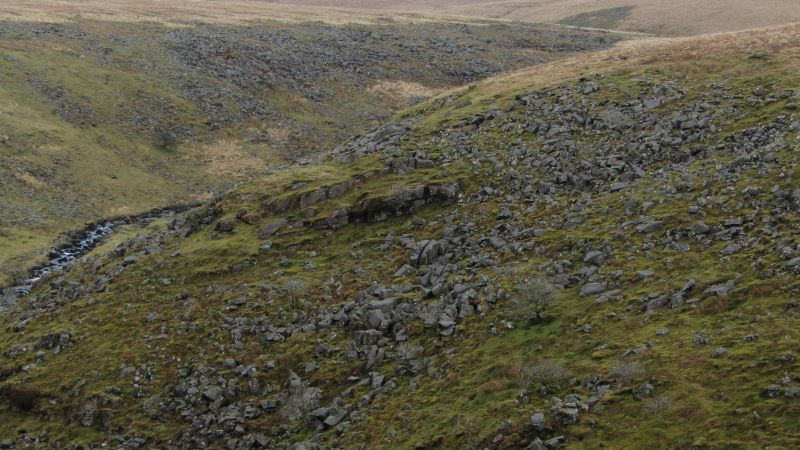 Knoll or Outer Standon To conclude, Tavy Cleave is one of the most dramatic settings on Dartmoor. It's sweeping hillsides strewn with masses of granite boulders spilling virtually to the river's edge far below is a vista that cannot be equalled. Adding to its rugged beauty is a range of five distinct rock piles of startling proportions high on the western slopes. Whilst relatively well documented in the literature the tors are not shown on modern day maps and whilst only one of the tors is named and has received the most attention, the other four have been somewhat overlooked. Building upon the pioneering work of Sanders and Watson from 1996, the main aim of this short article has been to simply recognise the four other Tavy Cleave Tors as separate entities. The names that are offered are based purely on the tors' positions in relation to the centremost and best known of the rugged rock piles here namely Sharp Tor. Thanks again to Paul Buck for his company and contribution to the current assessment of the tors at Tavy Cleave. 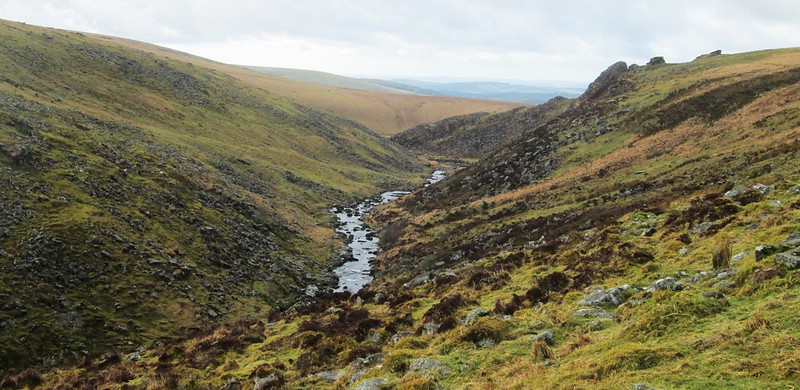 Looking down Tavy Cleave References: |